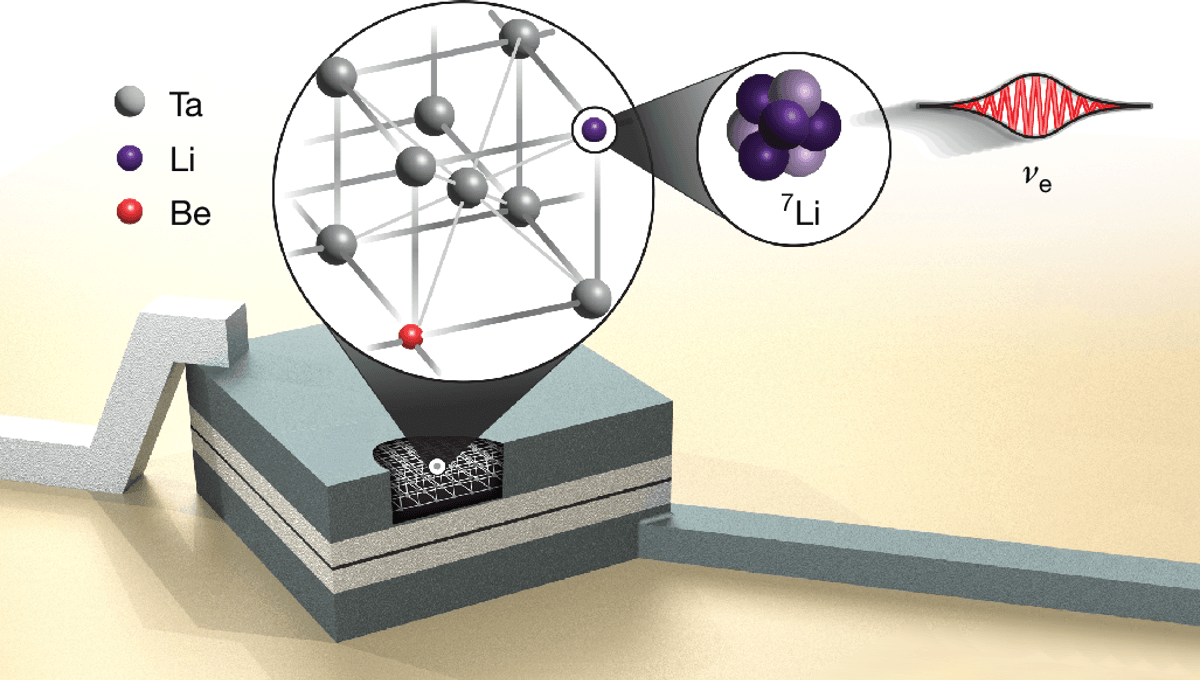
The quantum size of a neutrino has been measured for the first time using innovative table-top measurements of the particle’s decay.
ADVERTISEMENT GO AD FREE
Neutrinos are thought to be the second most common particles in the universe after photons, and the most plentiful ones with mass, but it’s not that long ago that physicists wondered if we would ever be able to prove their existence experimentally. They interact so weekly with other forms of matter, including our detectors, that only the tiniest subfraction can be observed. The recent (indirect) detection of one 35 times more energetic than the previous record holder shows how enormous the gaps are in what we have seen of them.
When we do manage to observe neutrinos, we can get reasonable estimates of their energy – but a lot of other measurements have been largely beyond our capacity, including their size. A team of researchers describe neutrinos in a new paper as “the least understood fundamental particles of nature”, but have also helped change that by using radioactive beryllium embedded in superconducting tantalum-aluminum sensors.
Subatomic particles don’t have fixed sizes the way familiar objects do. Instead, the wave-particle duality means they exist as a wave-like probability distribution. In neutrinos’ case, the spread of that wave packet has been unknown. Past estimates of neutrino size have ranged ten trillion times in size, a bit like not being able to tell if something is the size of a marble or the distance from the Earth to the Sun.
The team let beryllium-7 atoms decay to lithium, a process that produces some of the neutrinos we detect from the Sun. “By precisely measuring the behavior of lithium atoms produced in the decay of beryllium, we gain direct access to quantum properties of neutrinos—particles that are notoriously difficult to detect,” Associate Professor of Physics at the Colorado School of Mines Kyle Leach, who co-led the research, said in a statement.
The approach, called the Beryllium Electron capture in Superconducting Tunnel junctions experiment (BeEST) works because the neutrino and the lithium nucleus are entangled, so that measurements of one tell us about the other.
The team concluded the neutrino in this case has a spatial width larger than or equal to 6.2 picometers. That’s a tenth the radius of a small atom, but about a thousand times the size of an atomic nucleus. Nevertheless, that’s still a great deal smaller than the top end of previous studies, which left open the possibility they could be as large as 2 meters (7 feet) across. Neutrinos come in different “flavors” and the measurements apply only to those known as electron neutrinos.
ADVERTISEMENT GO AD FREE
Most experimental set-ups to study neutrinos are either powerful particle accelerators like the Large Hadron Collier, or giant fields of collectors buried in ice or at the bottom of the sea. However, this team could observe the lithium atoms’ behavior with superconducting sensors thinner than a human hair, enabling the experiment to be run in a modest lab. “Our work is a prime example of how small-scale, high-precision experiments can complement the discoveries made at large particle colliders,” Leach said.
“This is just the tip of the iceberg,” Leach said. “Our findings could have far-reaching implications, from refining the standard model of particle physics to improving methods for detecting neutrinos from nuclear reactors and astrophysical sources. We are excited for what comes next.”
The study is published open access in the journal Nature.
Source Link: Neutrinos' Quantum Size Likely Thousands Of Times Larger Than Atomic Nuclei